

Johns Hopkins University (JHU) continues to pad its space community résumé with their interactive map, “The map of the observable Universe”, that takes viewers on a 13.7-billion-year-old tour of the cosmos from the present to the moments after the Big Bang. While JHU is responsible for creating the site, additional contributions were made by NASA, the European Space Agency, the National Science Foundation, and the Sloan Foundation.
In this video I talk about features of the largest known moons of dwarf planets. Not much is known about them, but through analyzing certain things a lot can still be learned. Intro, outro and many other clips in this video were made with Space Engine. Music: 1. Twin Musicom - At The Foot Of The Sphinx 2. Kevin MacLeod - Martian Cowboy 3. Kevin MacLeod - Ritual 4. Kevin MacLeod - Spacial Winds 5. Kevin MacLeod - Crypto 6. Kevin MacLeod - Anguish
Solar System Researchers and Cosmologists have been exploring the evolution of our universe for decades, trying to gain a better understanding of the cosmic phenomenon exhibited by the celestial bodies that occupy space. They've found planets that come in all shapes and sizes, from small dwarf planets to massive gaseous planets, with some sharing similarities but many having their own unique characteristics that set them apart from the rest.
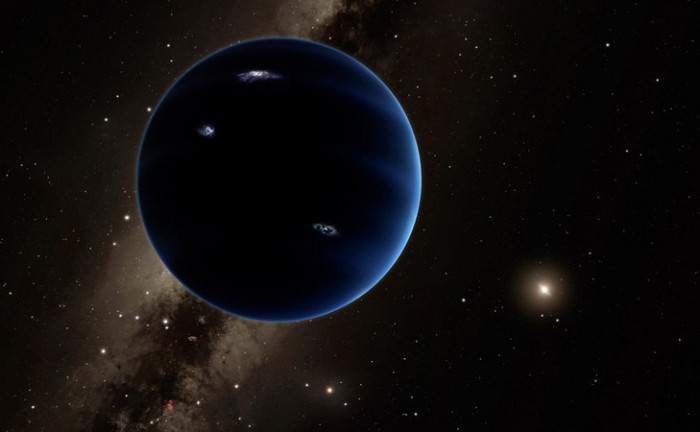
Artist's concept of the hypothetical "Planet Nine". Credit: NASA/JPL-Caltech/Robert Hurt
Main Page of the LSST

Artist’s impression of the Large Synoptic Survey Telescope (LSST). Credit: lsst.org
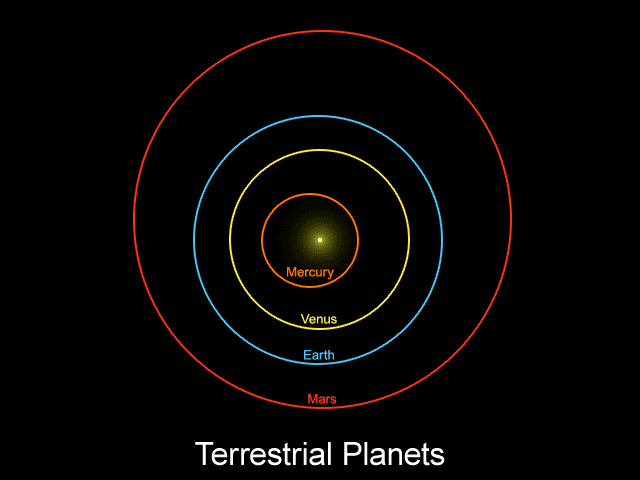
Animated diagram showing the spacing of the Solar Systems planet’s, the unusually closely spaced orbits of six of the most distant KBOs, and the possible “Planet 9” (aka. “Planet X”). Credit: Caltech/nagualdesign
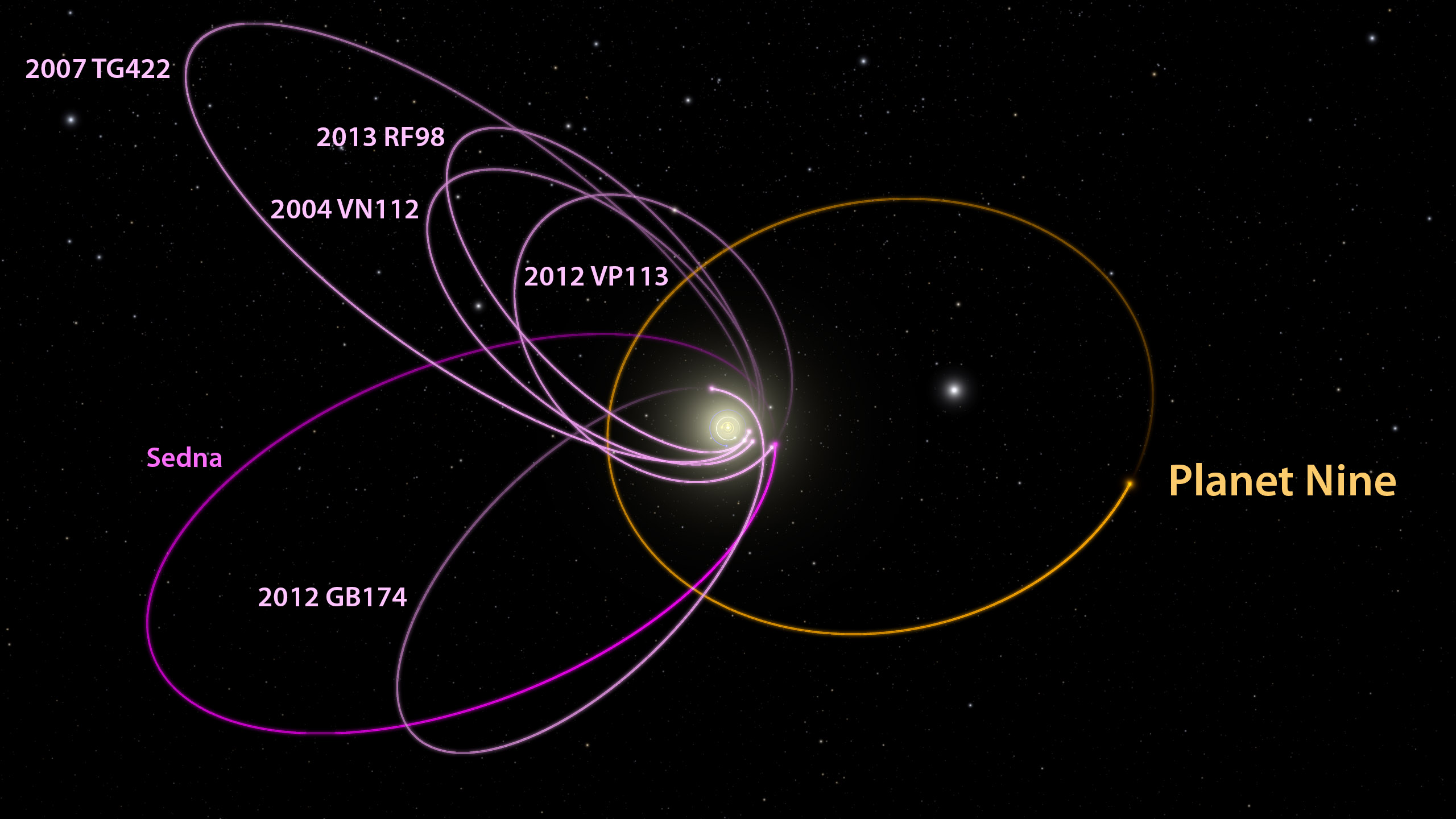
The orbits of several KBOs provide indications about the possible existence of Planet 9. Credit: Caltech/R. Hurt (IPAC)
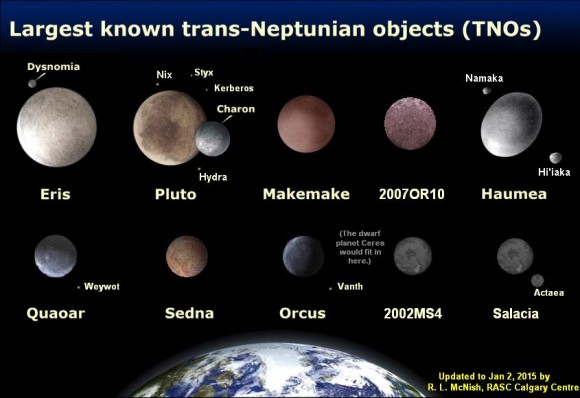
The presently known largest small bodies in the Kuiper Belt are likely not to be surpassed by any future discoveries.
This is the conclusion of Dr. Michael Brown, et al. (Illustration Credit: Larry McNish, Data: M.Brown)
The self-professed �Pluto Killer� is at it again. Dr. Michael Brown is now reminiscing about the good old days when
one could scour through sky survey data and discover big bright objects in the Kuiper Belt. In his latest research paper,
Brown and his team have concluded that those days are over.
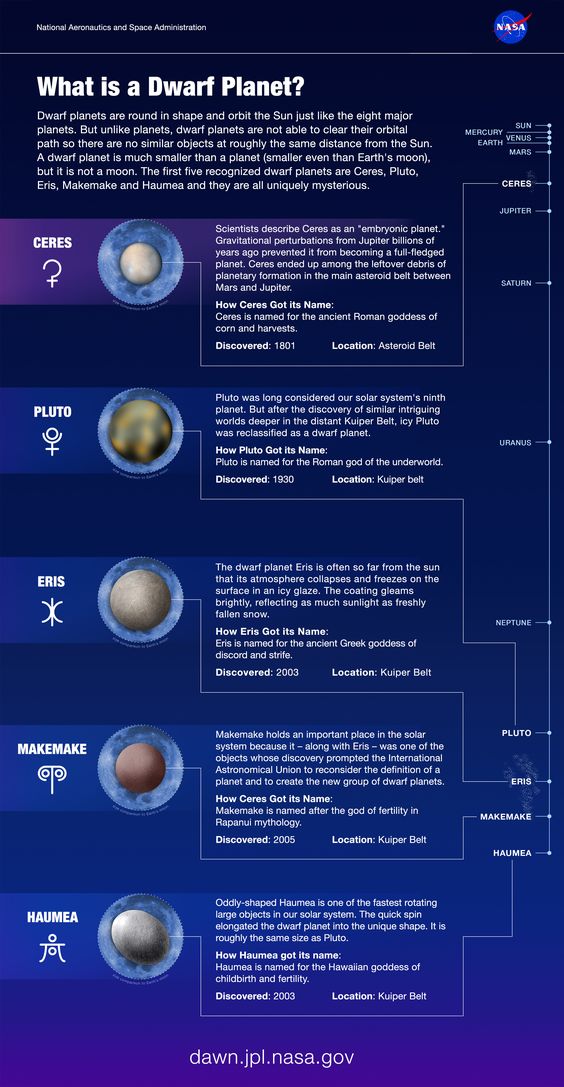
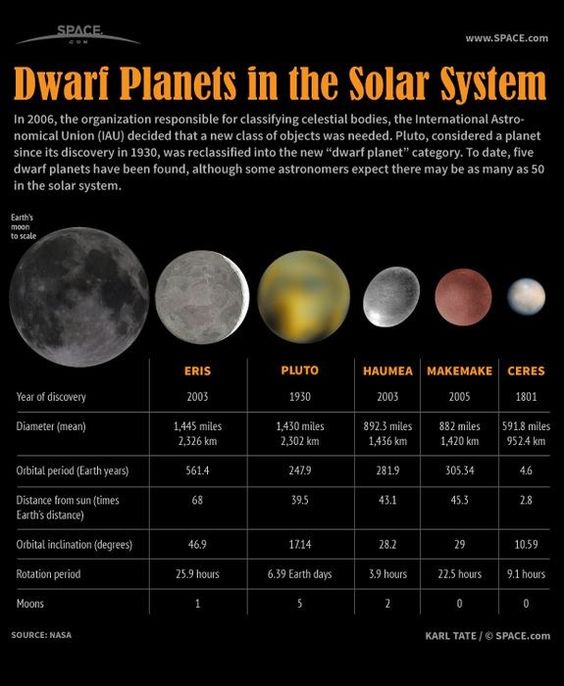
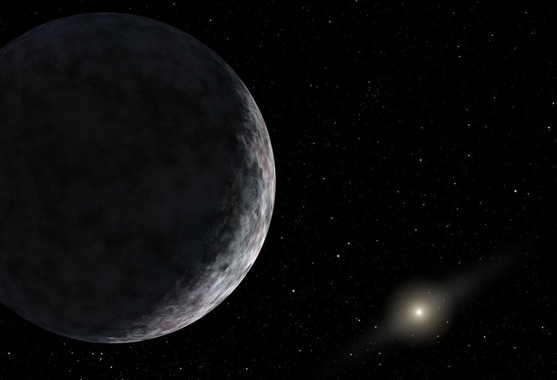
At least two unknown planets could exist in our solar system beyond Pluto. / Credit: NASA/JPL-Caltech.
Could there be another Pluto-like object out in the far reaches of the Solar System? How about two or more?
Earlier this week, we discussed a recent paper from planet-hunter Mike Brown, who said that while there aren�t likely to be any bright,
easy-to-find objects, there could be dark ones �lurking far away.� Now, a group of astronomers from the UK and Spain maintain at
least two planets must exist beyond Neptune and Pluto in order to explain the orbital behavior of objects that are even farther out,
called extreme trans-Neptunian objects (ETNO).

My twitter: / dreksler_astral Eris, the most massive dwarf planet and the second most distant object in the Solar System. So what would standing on this distant and unexplored object be like? Let's see. Intro and outro footage made with Space Engine. Music: DL-Sounds - Mercury
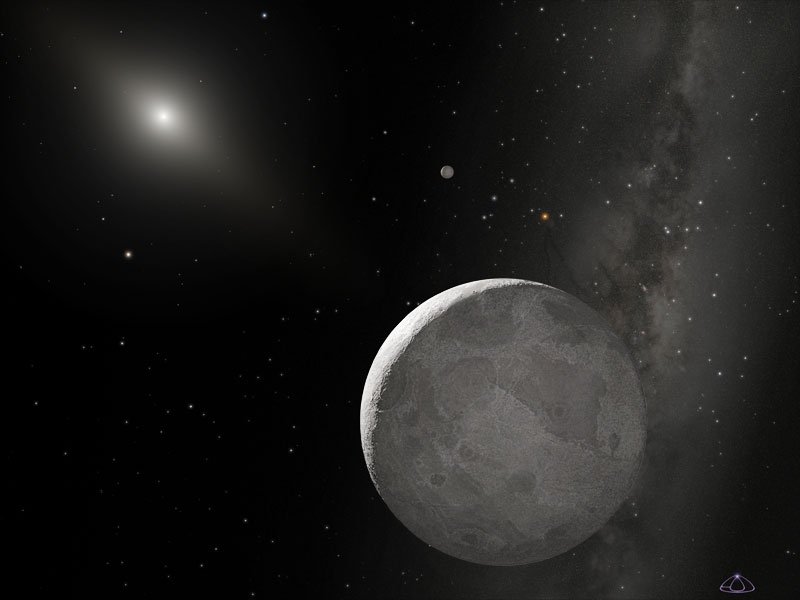
Artist illustration of the dwarf planet Eris. Image credit: NASA
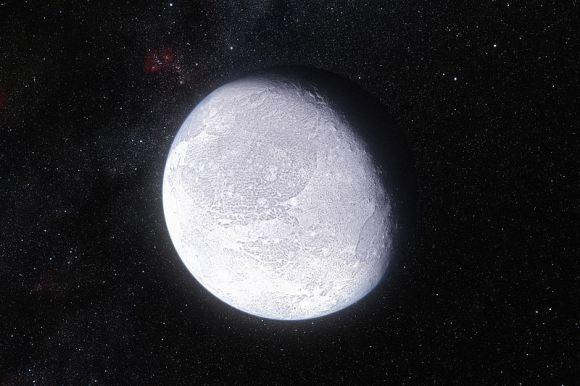
Artist’s impression shows the distant dwarf planet Eris, highlighting its bright surface. Credit: ESO
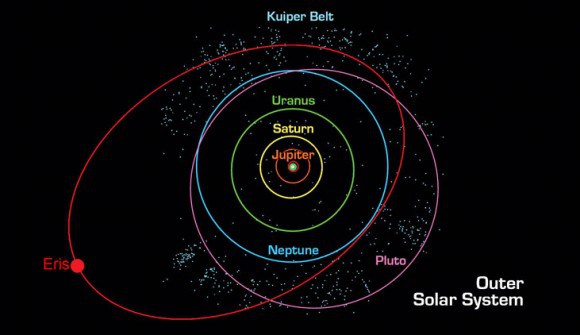
A diagram showing solar system orbits. The highly tilted orbit of Eris is in red. Credit: NASA
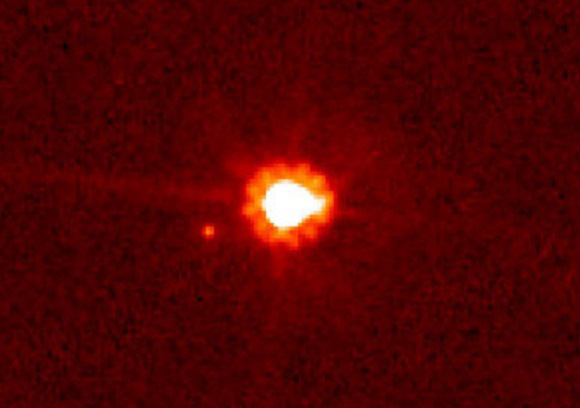
Eris (center) and its moon of Dysnomia (left of center), taken by the Hubble Space Telescope. Credit: NASA/ESA/Mike Brown
Eris (center) and its moon of Dysnomia (left of center), taken by the Hubble Space Telescope. Credit: NASA/ESA/Mike Brown
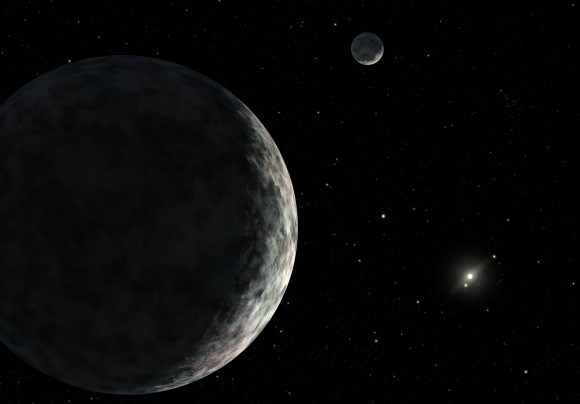
Artist Impression of ERIS and it's moon Dysmonia

An artist’s conception of Sedna. This depiction assumes that Sedna has a tiny as yet undiscovered moon. Image credit; NASA/JPl-Caltech
#sedna #dwarfplanets #insanecuriosity A. Definition of Sedna Planet Sedna is a distant and mysterious world located in the outer reaches of our Solar System. It is the most distant known object in the Solar System and has been classified as a dwarf planet. It was discovered in 2003 by Michael E. Brown, who later named it “Sedna” after the Inuit goddess of the sea, Sidne. Sedna is believed to be the remnant of the Early Solar System. Exactly two decades later, Sedna has again caught the limelight of astronomers all around the World. Due to its mysterious nature, Sedna has always confused astronomers until now. Sedna is a dwarf planet by the International Astronomical Union (IAU). It was officially classified as a dwarf planet in 2008, making it the third object recognised by the IAU. It is located beyond the orbit of Neptune and is believed to be part of the Kuiper Belt, a region of icy bodies beyond the orbit of Neptune. B. Overview of Sedna's discovery The discovery of Sedna has significantly impacted the field of astronomy and astrophysics. Sedna is the most distant object ever observed in the Solar System, and its discovery has provided scientists with valuable insights into the formation and evolution of the outer Solar System. Sedna's discovery has also helped to confirm the existence of the hypothesised Oort Cloud, a vast spherical shell of icy objects that surrounds the Solar System. Sedna's orbit is highly eccentric, and its perihelion is much farther from the Sun than any other known object in the Solar System. - - "If You happen to see any content that is yours, and we didn't give credit in the right manner please let us know at and we will correct it immediately" "Some of our visual content is under an Attribution-ShareAlike license. ) in its different versions such as 1.0, 2.0, 3,0, and 4.0 – permitting commercial sharing with attribution given in each picture accordingly in the video." Credits: Ron Miller, Mark A. Garlick / MarkGarlick.com Credits: Nasa/Shutterstock/Storyblocks/Elon Musk/SpaceX/ESA/ESO/ Flickr Video Chapters: 00:00 Intro 01:10 Overview of Sedna's discovery 03:10 Physical Characteristics 04:27 Size and mass 05:00 Orbital path 06:01 Theories of Origin 07:42 Composition 08:22 Potential for habitability 09:27 Impact of Sedna's discovery #insanecuriosity #sedna #dwarfplanets
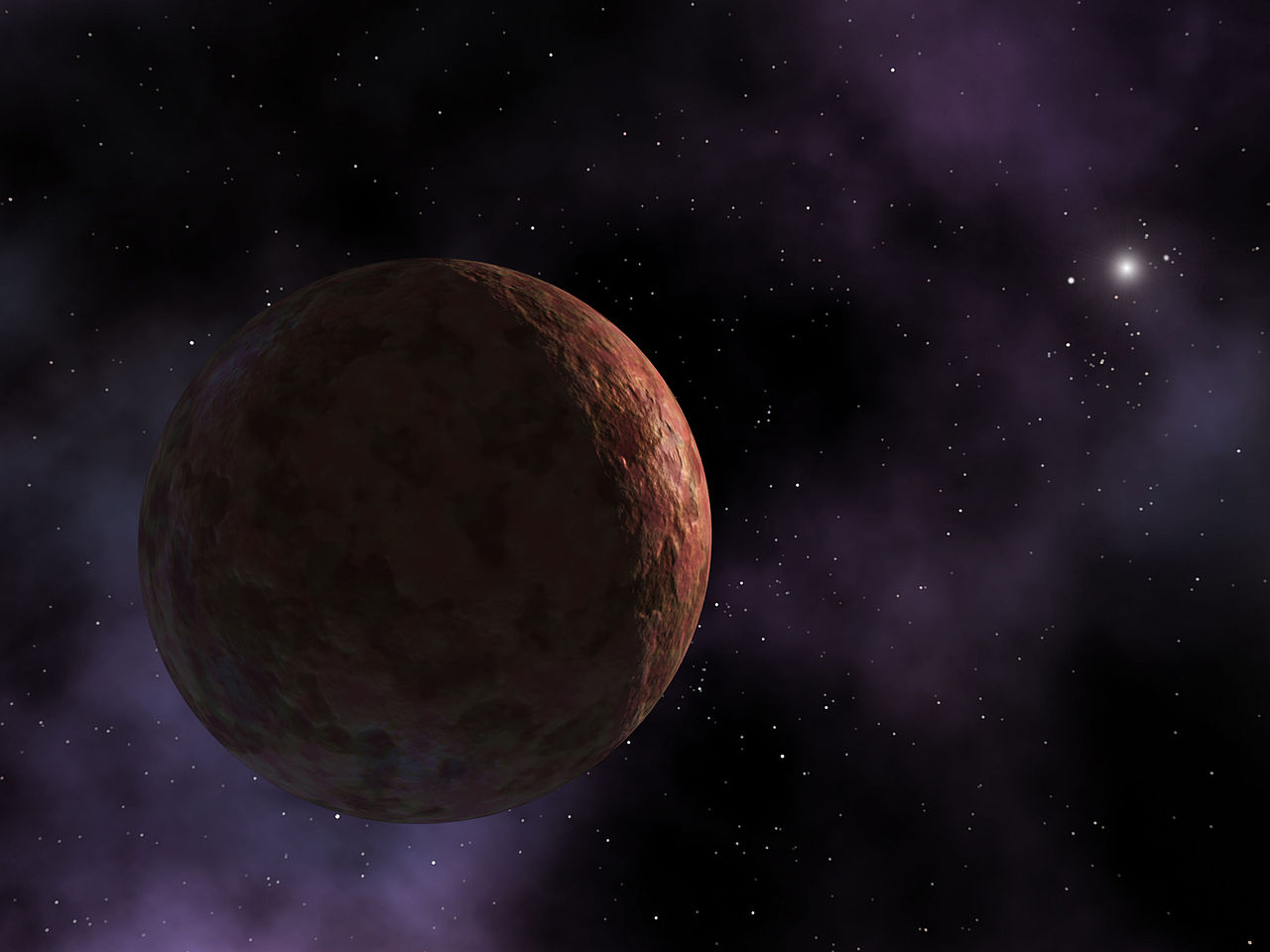
Object 90377 Sedna – a distant trans-Neptunian object known best for its highly elliptical, 11,390-year long orbit – is currently on its way towards perihelion (its closest approach to the Sun) in 2076. After that, Sedna will swing out into deep space again and won’t be back for millennia, making this flyby a once-in-a-lifetime (or, once in ~113 lifetimes) opportunity to study an object from the far reaches of our solar system. There are no missions to Sedna in the works just yet, but astronomers are beginning to plan for the possibility, and the ideal launch date for such a mission is approaching fast, with two of the best launch windows coming up in 2029 and 2034. Artist’s Rendering of Sedna. Credit: NASA/JPL-Caltech/R. Hurt (SSC-Caltech)
#insanecuriosity #sedna #planetx Hey guys, we need to do something… we need to make ourselves heard! By whom? By NASA, of course! Why? Well, it's about Sedna, the great little world that has been moving in the Kuiper Belt, at the edge of the solar system, for billions of years. Sedna is a trans-Neptunian object known primarily for its highly elliptical orbit, which takes a whopping 11,390 years to complete one trip around the Sun. Currently, Sedna is heading towards its perihelion (its closest point to the Sun), which it will reach in 2076 before heading back into the depths of space, not to return for millennia. This makes the upcoming flyby a once-in-a-lifetime opportunity to study an object from the far reaches of our solar system. Sedna is the first object we've ever found that might have originated from the Oort Cloud. If we really want to seize this opportunity, we need to get to work immediately and plan a mission that can launch within the next twenty years… NASA is considering it, but there's a risk that the decision might be negatively influenced by what psychologists call the “old father syndrome,” which in this case refers to the scientific community's inability to get excited about projects that would only see completion many years after the participants' lives or careers have ended… In short, NASA is crunching the numbers and will have to give an answer soon, but there's widespread fear that this enormous opportunity might ultimately be missed. Can we do something about it? Obviously not… these are decisions made above our heads, driven by economic reasons and only partly scientific ones. But maybe we can try to understand more about it, to start a debate wherever we can make our opinion known. What do you say, shall we give it a try? DISCUSSIONS & SOCIAL MEDIA E-mail:Commercial Purposes: Tik Tok: Reddit: Instagram: Twitter: Facebook: Linkedin: Our Website: Credits: Ron Miller, Mark A. Garlick / MarkGarlick.com ,Elon Musk/SpaceX/ Flickr -- 00:00 Intro 2.20 Where does our Solar System ‘end’? 6:26 What we have discovered 8:25 How can Sedna have a so strange Orbit? 9:40 The origin of Sedna 12:30 The evidence of planet 9 13:30 Future missions -- #insanecuriosity #sedna #planetx
Quite far away, a lonely, red rock has something imprinted upon its mysterious orbit. What secrets might it hold? SUPPORT You can directly support the show at Patreon / emergentbeacon Music from this video can be purchased directly at Patreon support audio track / 76993864 CITATIONS You can find a detailed list of informational and media citations at CHAPTERS 0:00 this is Sedna 0:37 discovery and details 2:29 sedna's orbit 4:04 orbit origin theories 5:14 next nearest approach 5:49 closing thoughts ACCESSIBILITY This video's English caption file, subtitle file, and instructions for anybody : interested in providing translations can be found here CREW brandt hughes: research, writer, host, editor, music production, sound design, captions SOCIALS discord
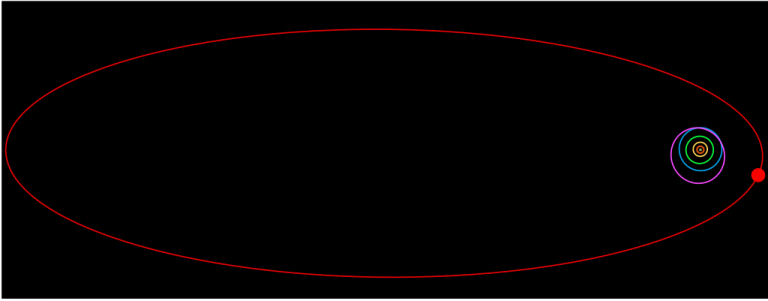
The orbit of dwarf planet candidate 90377 Sedna (red) compared to Jupiter (orange), Saturn (yellow), Uranus (green), Neptune (blue), and Pluto (purple). Credit: Szczureq/kheider/NASA (Wikimedia Commons).
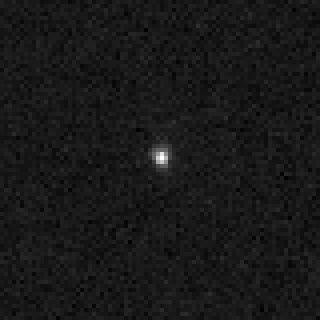
90377 Sedna as seen by the Hubble Space Telescope in 2004. Credit: NASA.

A capture of Haumea… with an 8″ telescope! The brilliant star in the frame is magnitude +2.7 Eta Boötis
(Murphid). Image credit: Mike Weasner/Cassiopeia observatory
#haumea #solarsystem #insanecuriosity This is one of the strangest objects in the solar system, it is classified as a dwarf planet, but it is not round. It has a ring of asteroids like Saturn's, but not as visible. Despite being very small, it has two moons; it has a flattened shape that gives it the appearance of an egg and spins faster than any other object in the solar system. This is Haumea, the strangest dwarf planet of all. Would you like to know why astronomers are so intrigued by this object? Let's find out! Haumea is a dwarf planet that lies in the Kuiper belt, a region of icy doughnut-shaped bodies beyond the orbit of Neptune, much like the asteroid belt between Mars and Jupiter, but farther from the Sun; for that reason, all objects in that place are icy and often covered in ice. Objects like Haumea that lie beyond the orbit of Neptune are classified as trans-Neptunian objects; these are very difficult to study due to their small size, low brightness, and enormous distances that separate us from them - - "If You happen to see any content that is yours, and we didn't give credit in the right manner please let us know at" "Some of our visual content is under an Attribution-ShareAlike license. and we will correct it immediately ) in its different versions such as 1.0, 2.0, 3,0, and 4.0 – permitting commercial sharing with attribution given in each picture accordingly in the video." Credits: Ron Miller, Mark A. Garlick / MarkGarlick.com Credits: Nasa/Shutterstock/Storyblocks/Elon Musk/SpaceX/ESA/ESO/ Flickr Video Chapters: 00:00 Intro 00:42 What is Haumea? 02:40 An irregular shape 05:20 Moons of a dwarf planet 07:49 Haumea isn't alone 09:02 A dwarf planet with rings #insanecuriosity #haumea #solarsystem
#dwarfplanet #haumea #insanecuriosity It should be common knowledge by now that the Kuiper Belt, the ring of icy bodies that extends well beyond the orbit of Neptune, is home to some of the strangest objects in our solar system. Within this region are trillions of comets, asteroids, and large planetoids such as Pluto, Eris, and Makemake—a veritable planetary zoo, in short. But one of its strangest oddities of all is probably that represented by what was once known as 2003 EL61, an object capable of summing up in itself some truly unique features. This distant outpost of the solar system travels in orbit with an average distance from the Sun of about 43 AU, or 6.45 billion km, going from a perihelion of 34.6 AU to an aphelion of 51.6 AU, and taking a whopping 183 years to complete an entire revolution. A decidedly eccentric orbit, but one that nonetheless places EL61 in the category of so-called classical KBOs (Kuiper Belt Objects), which differ from scattered objects—a category to which the more famous Eris belongs, i.e., those KBOs with highly elliptical and highly inclined orbits, probably thrown into their present orbits through gravitational interactions with giant planets. -- DISCUSSIONS & SOCIAL MEDIA E-mail:Commercial Purposes: Tik Tok: Reddit: Instagram: Twitter: Facebook: Linkedin: Our Website: -- Credits: Ron Miller, Mark A. Garlick / MarkGarlick.com ,Elon Musk/SpaceX/ Flickr -- 00:00 Intro 00:29 2003 EL61 04:48 Haumea 05:50 Moons 14:45 Do the rings have anything to do with the shape -- #insanecuriosity #haumea #dwarfplanet
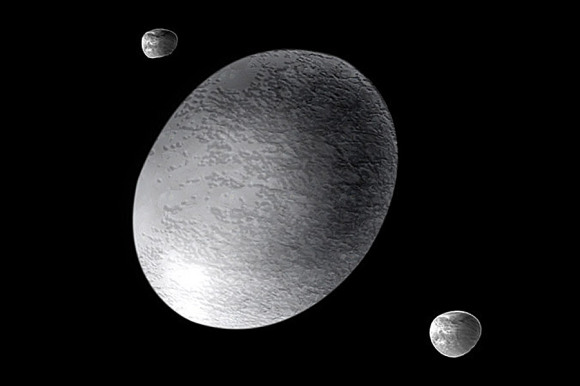
Artist’s impression of the dwarf planet Haumea and its moons, Hi’aka and Namaka. Credit: NASA
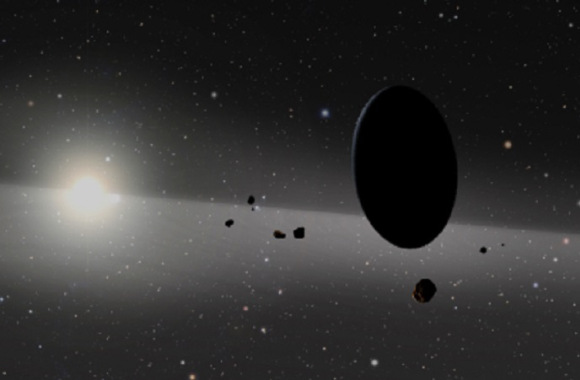
An artists’ conception of the strange environs of Haumea and friends. Image credit: Harvard-Smithsonian CfA
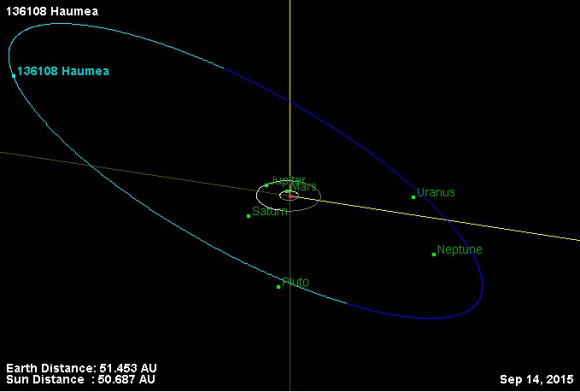
The orbit of 136108 Haumea. Image credit: NASA/JPL
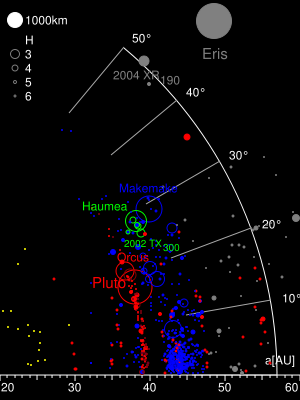
Haumea and friends: orbital inclinations of TNO/KBO families vs AU distance. Image credit: Wikimedia/Eurocommuter
Published on Mar 3, 2015 Three kerbals touch down on the surface of the small moon Hi'iaka in the depths of the Kuiper Belt.
Hi'iaka, along with Namaka, orbits the large dwarf planet Haumea, with its dramatic ellipsoid shape
(see video icon to appreciate this, as KSP cannot render it for larger objects).
After a relatively painless docking high above Hi'iaka's plains, the kerbals prepare to embark on the next leg of their journey: Orcus and Vanth.
Suggest future objects for visiting in the comments. Avoid tiny objects please, and dwarf planets with moons are a big plus.
Suggestions here:... (Orcus and Vanth are next) RIP NOBODY! This time... SRB Gaming Category Gaming License Standard YouTube License
(Click on the youtube icon and it will run) Uploaded on Sep 11, 2009 My rendition of the dark red spot on the surface of Kuiper belt object Haumea. Music "ピエール" by Playdoh ( • • )
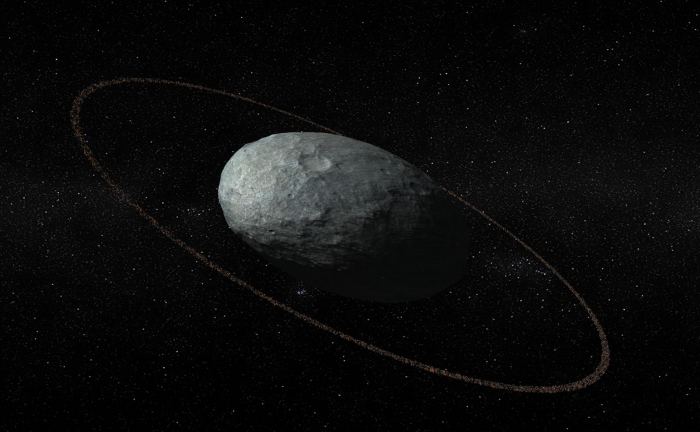
Artist concept of Haumea, with the correct proportions of the main body and the ring. The ring is at a distance of 2287 kilometers from the center of the main body and is darker than the surface of the dwarf planet itself. Credit: Instituto de Astrofísica de Andalucía.
Outreach video produced on the occasion of the publication (in Oct. 2017) in Nature of the paper entitled "The size, shape, density and ring of the dwarf planet Haumea from a stellar occultation" by J.L. Ortiz et al.

Artist’s impression of the dwarf planet Haumea and its moons, Hi’aka and Namaka. Credit: NASA
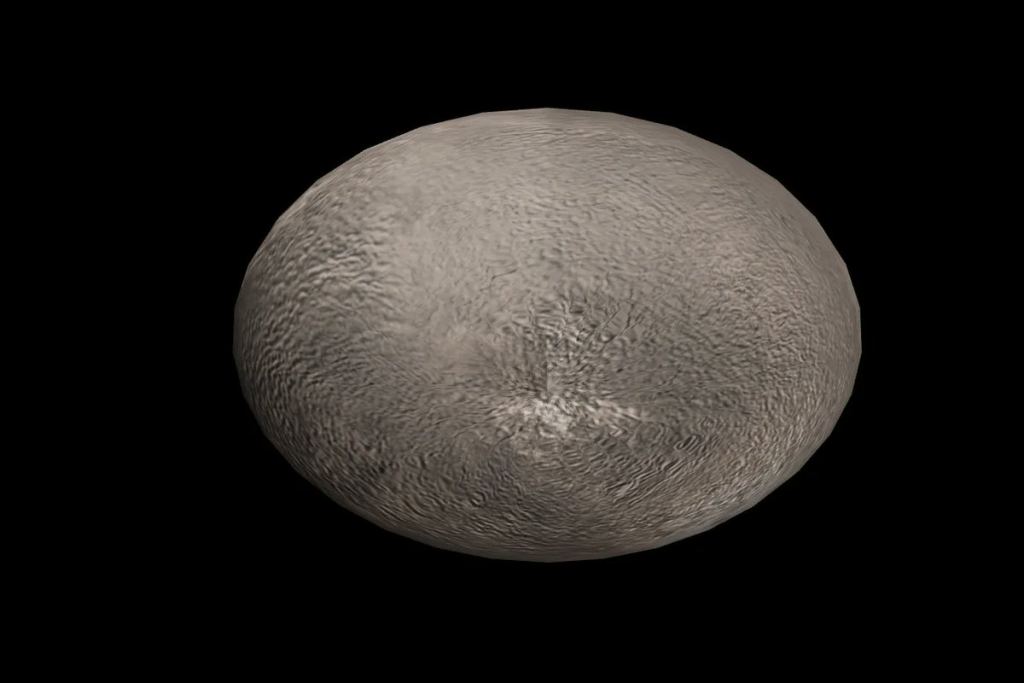
Screenshot of an interactive 3D model of Haumea. Credit – NASA Visualization Technology Applications and Development
Presented by Jessica Noviello, NASA Postdoctoral Management Program Fellow
: You can buy Universe Sandbox 2 here Or get a shirt: Hello and welcome! My name is Anton and in this video, we will talk about dwarf planet Haumea, its rings and various new discoveries about this unusual object. Paper: Support this channel on Patreon to help me make this a full time job: Space Engine is available for free here: Enjoy and please subscribe. Twitter: Facebook: Twitch: Bitcoins to spare? Donate them here to help this channel grow! 1GFiTKxWyEjAjZv4vsNtWTUmL53HgXBuvu The hardware used to record these videos: CPU: Video Card: Motherboard: RAM: PSU: Case: Microphone: Mixer: Recording and Editing: Some of the above are affiliate links, meaning I would get a (very small) percentage of the price paid. Thank you to all Patreon supporters of this channel Special thanks also goes to all the wonderful supporters of the channel through YouTube Memberships: Thank you to all Patreon supporters of this channel Specifically, great thanks to the following members: Morrison Waud Vlad Manshin Mark Teranishi TheHuntress Ralph Spataro Albert B. Cannon Lilith Dawn Greg Lambros adam lee Gabriel Seiffert Henry Spadoni J Carter Jer Silver surfer Konrad Kummli Nick Dolgy UnexpectedBooks.com Mario Rahmani George Williams Shinne Jakub Glos Johann Goergen Jake Salo LS Greger Lyndon Riley Lauren Smith Michael Tiganila Russell Sears Vinod sethi Dave Blair Robert Wyssbrod Randal Masutani Michael Mitsuda Assaf Dar Sagol Liam Moss Timothy Welter MD Barnard Rabenold Gordon Cooper Tracy Burgess Douglas Burns Jayjay Volz Anataine Deva Kai Raphahn Sander Stols Bodo Graßmann Daniel Charles Smith Daniel G. Eugene Sandulenko gary steelman Max McNally Michael Koebel Sergio Ruelas Steven Aiello Victor Julian Castillo xyndicate Honey Suzanne Lyons Olegas Budnik Dale Andrew Darling Niji Peter Hamrak Matthew Lazear Alexander Afanasyev Anton Newman Anton Reed
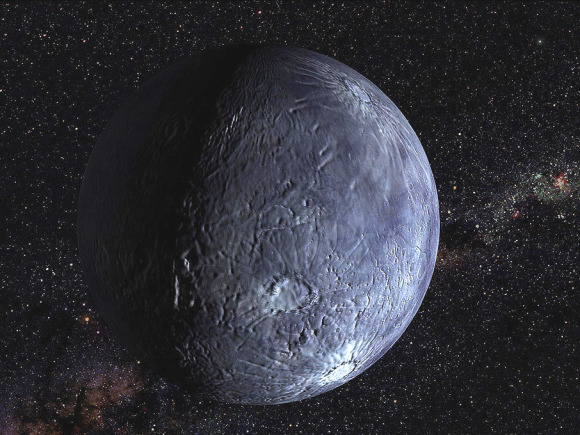
Artist’s impression of the Kuiper Belt Object and possible dwarf planet Quaoar. Credit: reborbit.com
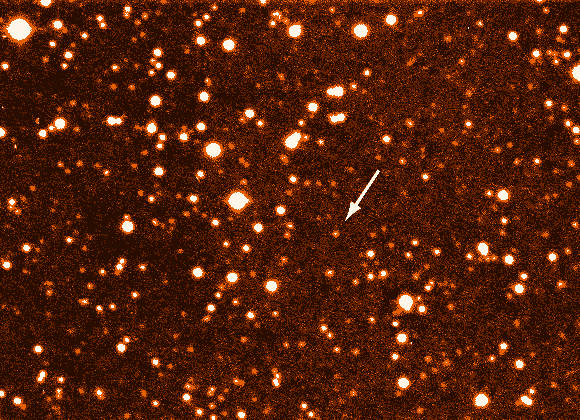
Images of Quaoar taken using the Oschin Telescope at the Palomar Observatory, California. Credit: Chad Trujillo & Michael Brown (Caltech)
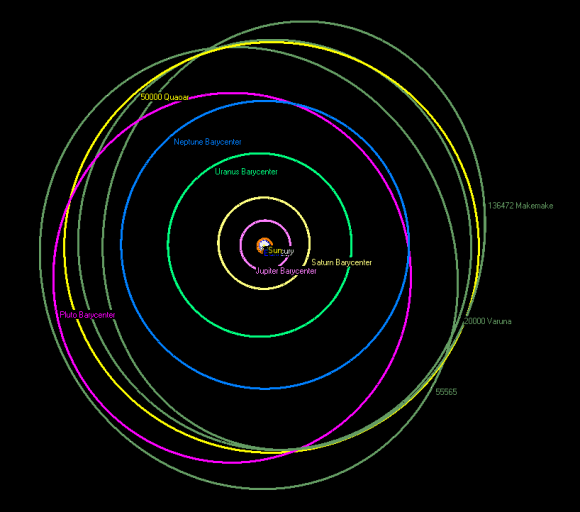
The orbit of Quaoar (yellow) and various other cubewanos compared to the orbit of Neptune (blue) and Pluto (pink). Credit: Wikipedia Commons/kheider
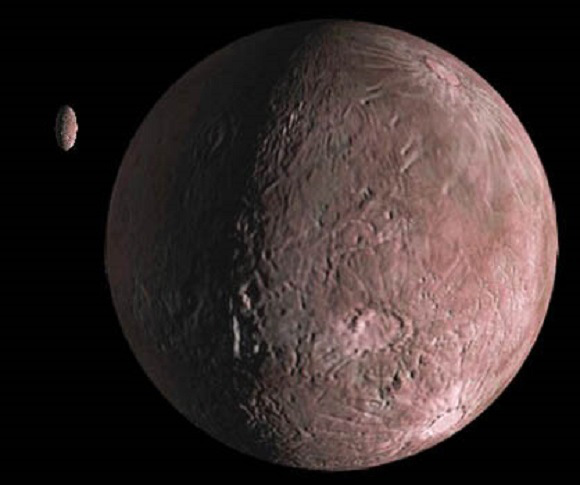
Artist’s impression of the moderately red Quaoar and its moon Weywort.
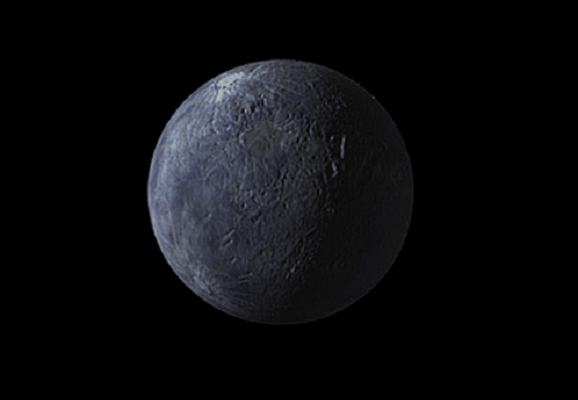
Artist’s impression of the Trans-Neptunian Object (TNO) 90482 Orcus. Credit: NASA
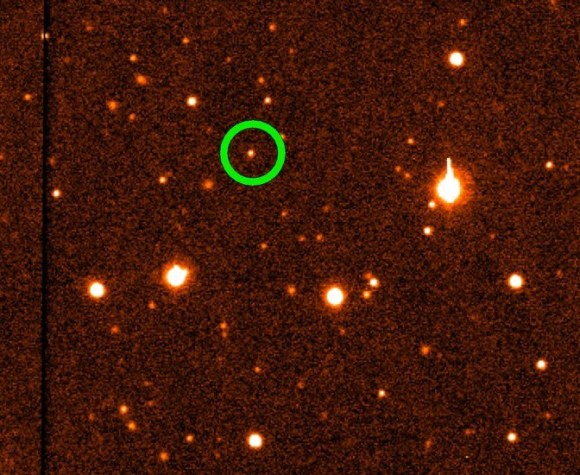
90482 Orcus. The location of Orcus is shown in the green circle (top, left). Credit: NASA
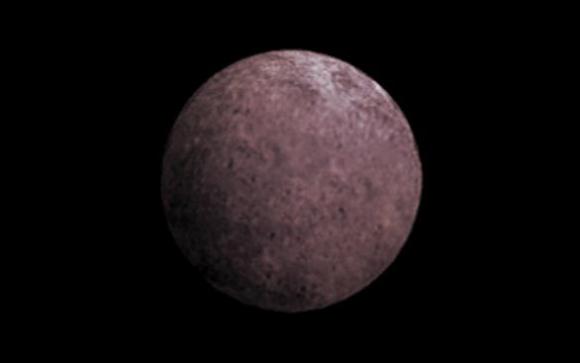
An artist’s conception of 2007 OR10, nicknamed Snow White. Astronomers suspect that its rosy color
is due to the presence of irradiated methane. Credit: NASA
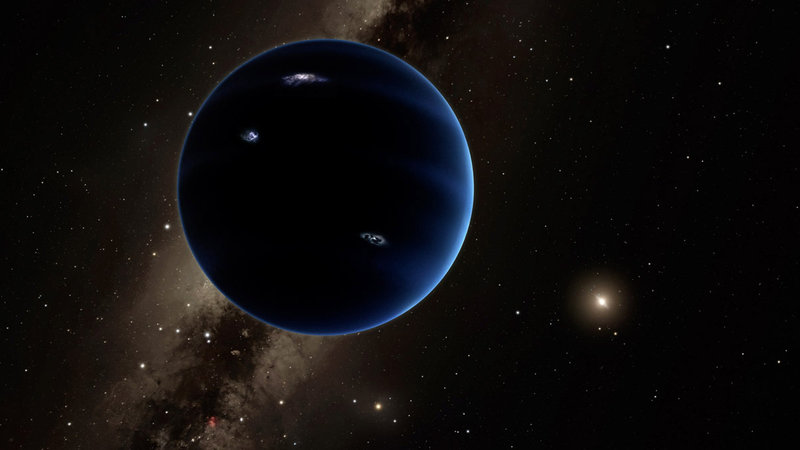
Artistic rendering shows the distant view from theoretical Planet Nine back towards the sun.
The planet is thought to be gaseous, similar to Uranus and Neptune.
Hypothetical lightning lights up the night side.
Credit: Caltech/R. Hurt (IPAC)
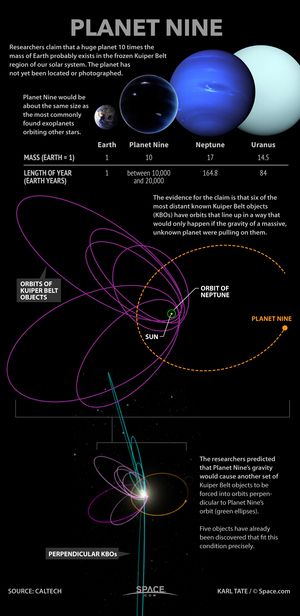
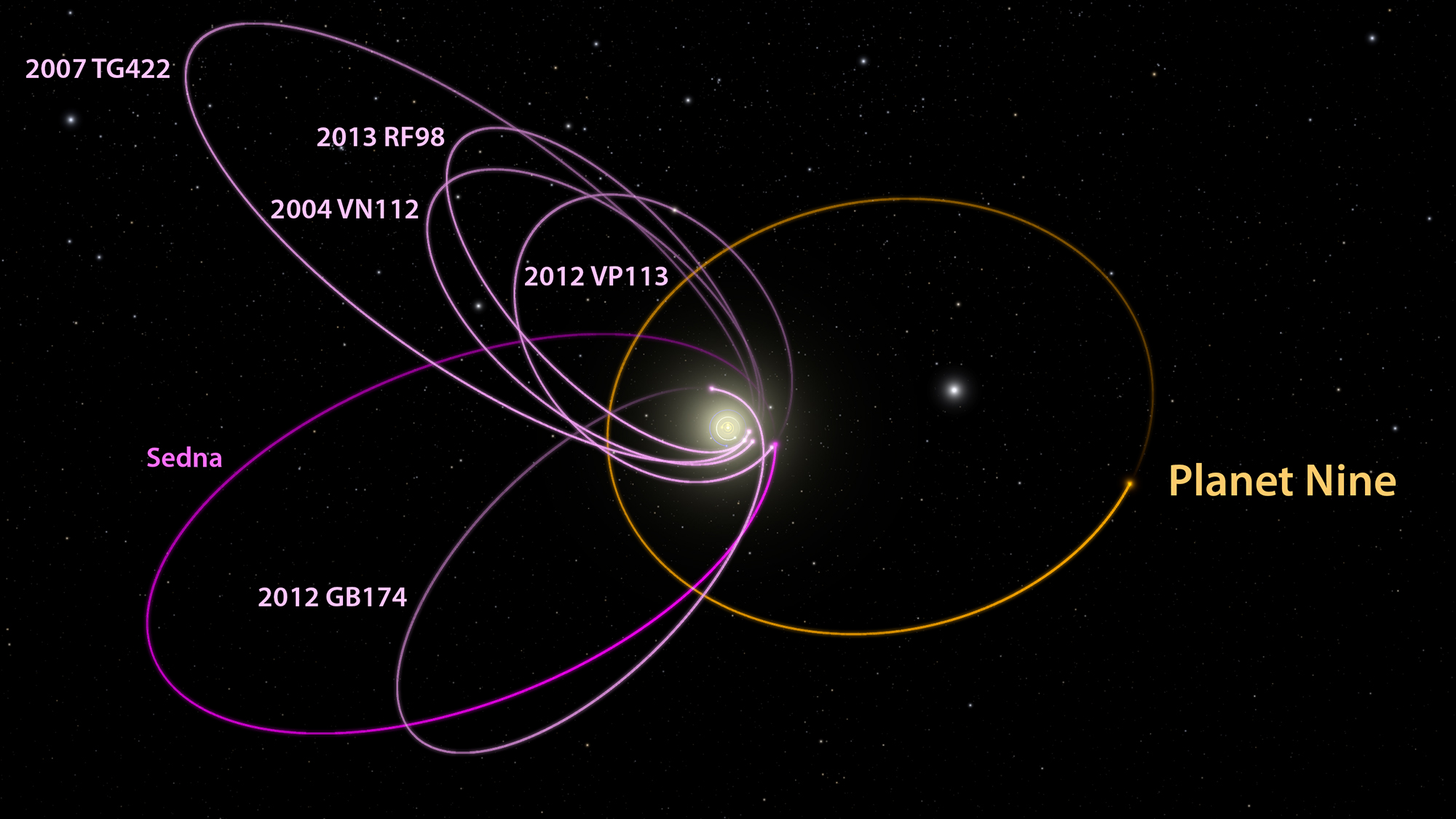
The six most distant known objects in the solar system with orbits exclusively beyond Neptune (magenta)
all mysteriously line up in a single direction. Also, when viewed in three dimensions,
they tilt nearly identically away from the plane of the solar system. Batygin and Brown show that a planet
with 10 times the mass of the earth in a distant eccentric orbit anti-aligned with the other six objects (orange)
is required to maintain this configuration.
Credit: Caltech/R. Hurt (IPAC); [Diagram created using WorldWide Telescope.]
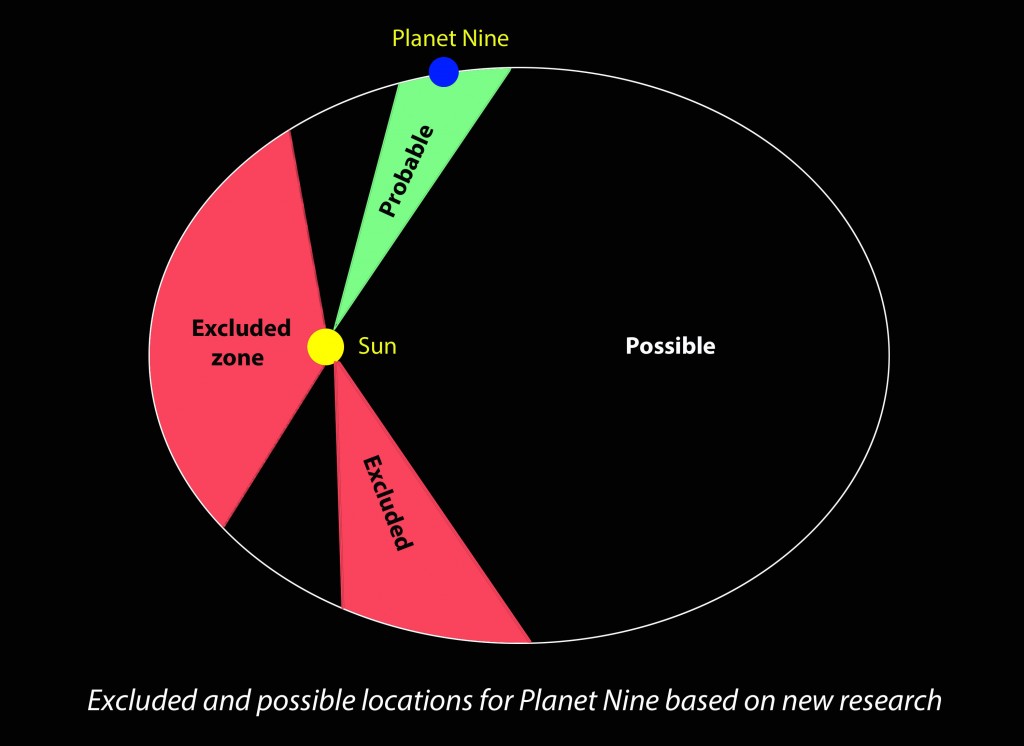
Based on a careful study of Saturn’s orbit and using mathematical models,
French scientists were able to whittle down the search region for Planet Nine to “possible” and “probable” zones.
Source: CNRS, Cote d’Azur and Paris observatories , created by the author
(click on the gray out icon video will start) Published on Jan 20, 2016 NASA’s Director of Planetary Science, Jim Green, discusses the Jan. 20 Astronomical Journal science paper
that points to the possibility of a new “Planet 9” in our solar system beyond Pluto,
examining the scientific process and inviting you to have a front row seat to our exploration of the solar system. Category Science & Technology License Standard YouTube License
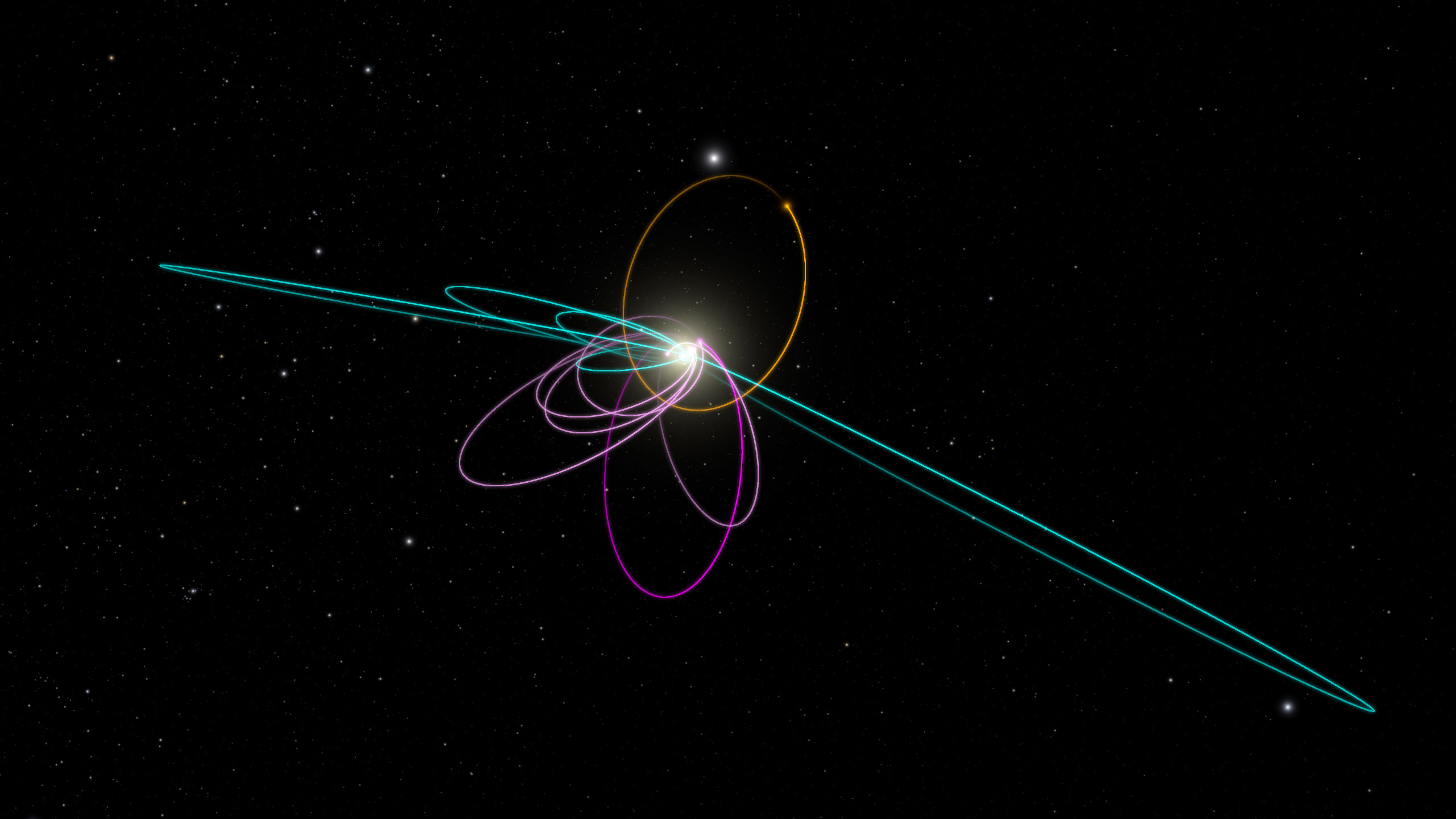
A predicted consequence of Planet Nine is that a second set of confined objects should also exist.
These objects are forced into positions at right angles to Planet Nine and into orbits that are perpendicular to the plane of the solar system.
Five known objects (blue) fit this prediction precisely.
Credit: Caltech/R. Hurt (IPAC) [Diagram was created using WorldWide Telescope.]
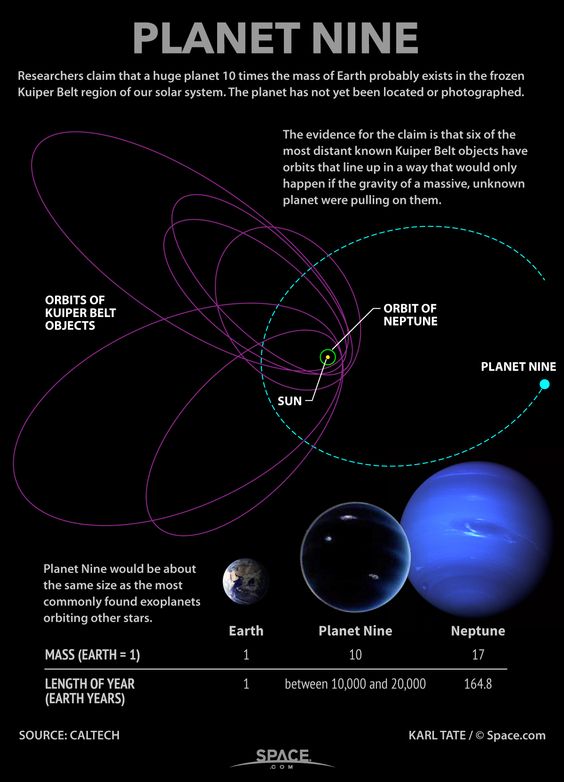


BACKYARDWORLDS.org Searching for planet 9
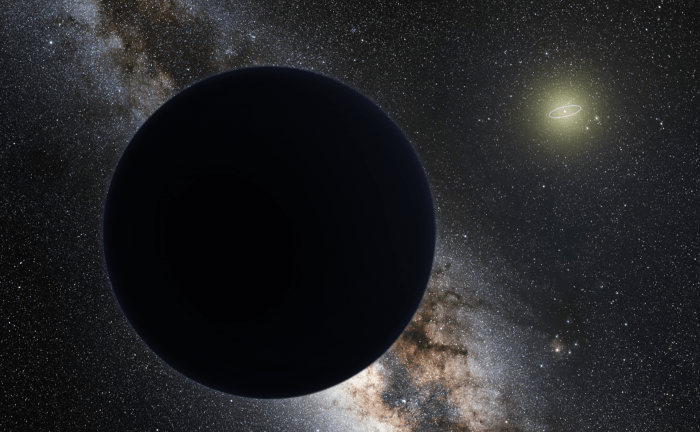
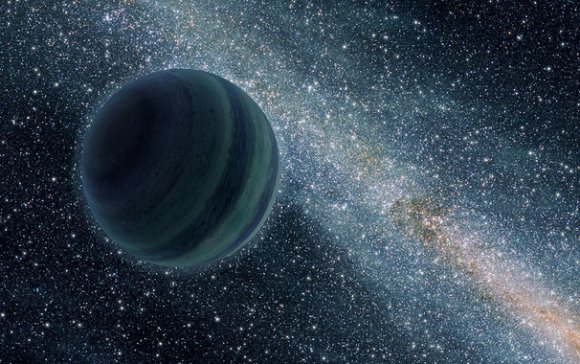
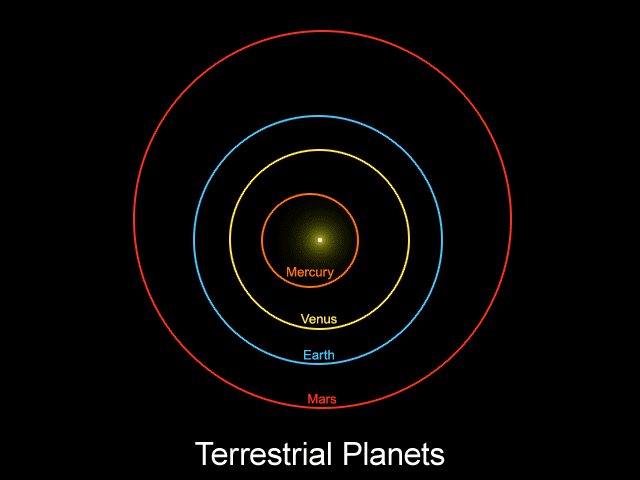
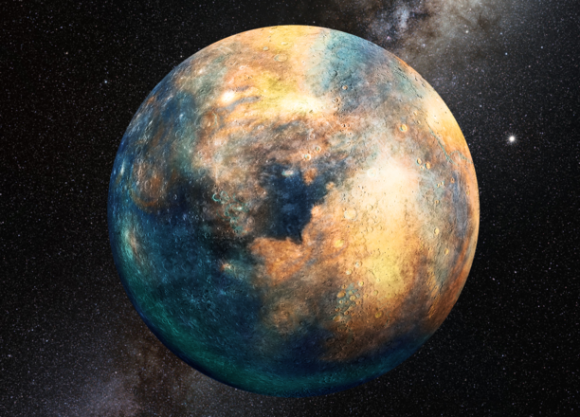

Artist's concept of the hypothetical "Planet Nine". Credit: NASA/JPL-Caltech/Robert Hurt
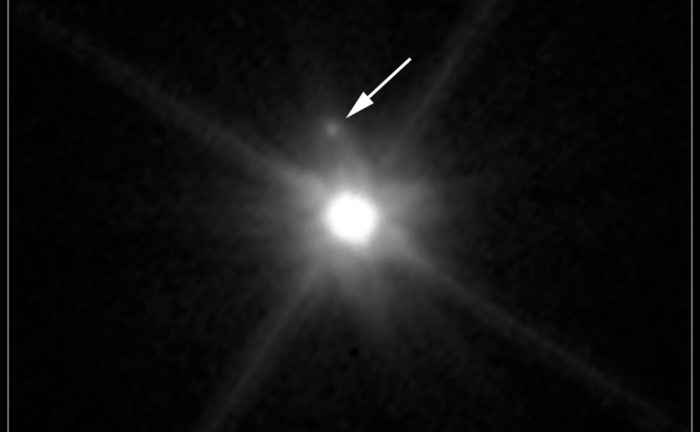
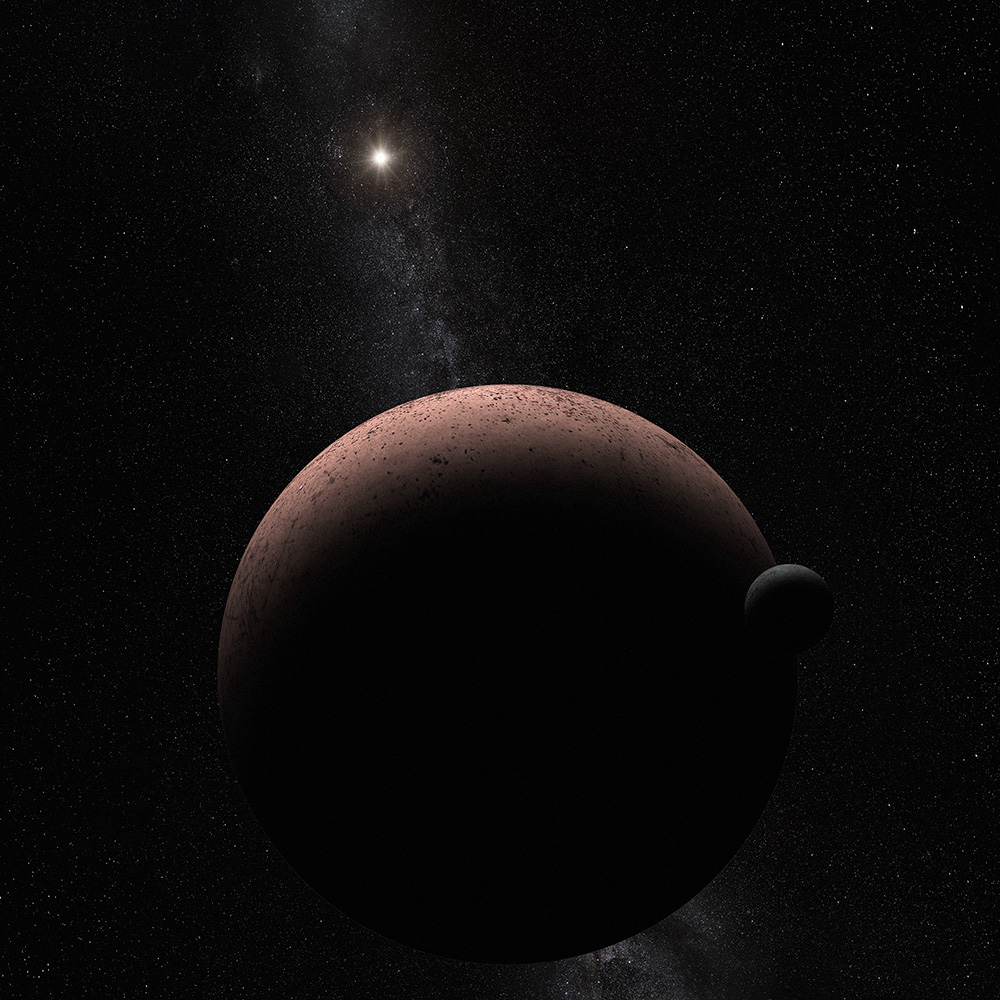
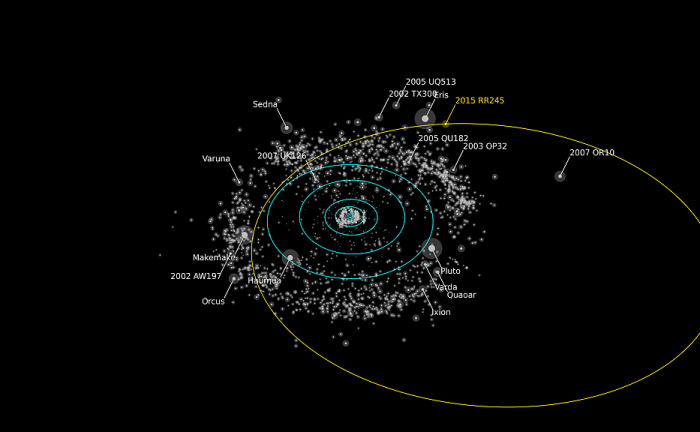
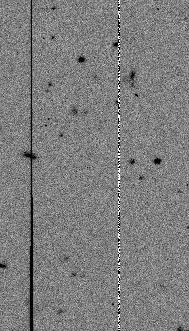
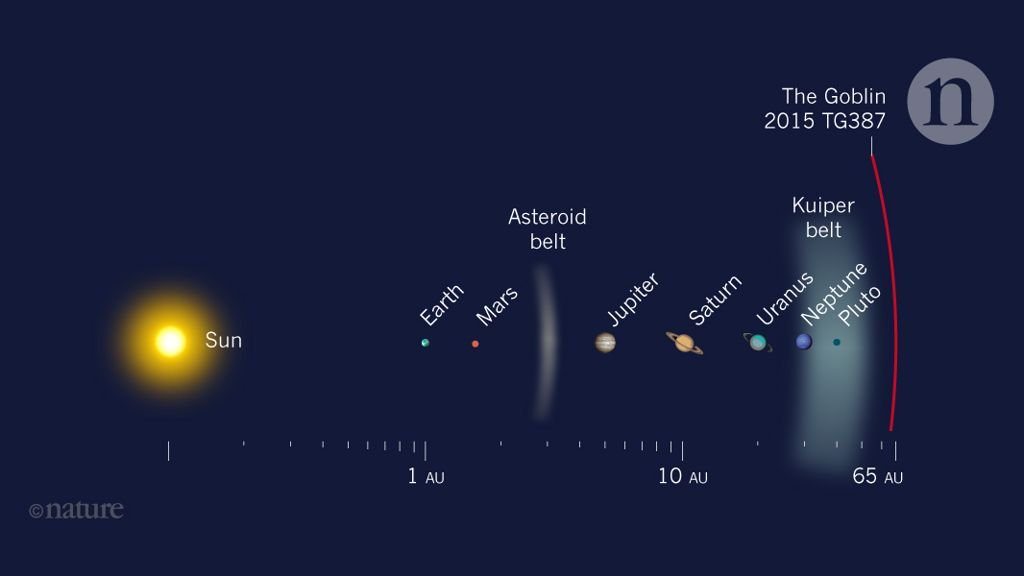
Astronomers have found a new dwarf planet way out beyond Pluto that never gets closer than 65 AUs to the Sun. It’s nicknamed “The Goblin” which is much more interesting than its science name, 2015 TG387. The Goblin’s orbit is consistent with the much-talked-about but yet-to-be-proven Planet 9.

Dwarf planet 2015 TG387, or Goblin, has an orbit that takes it much further from the Sun than other Inner Oort Cloud Objects Sedna and 2012 VP113. Image: Roberto Molar Candanosa and Scott Sheppard, courtesy of Carnegie Institution for Science.
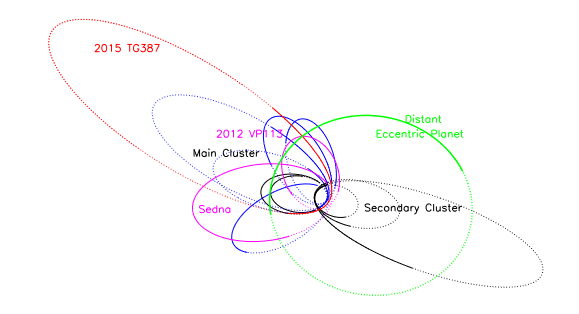
A figure from the study shows the orbit of 2015 TG387 and other distant objects in the Solar System. According to the paper, ” 2015 TG387 continues the longitude clustering trend seen for the inner Oort cloud objects and ETNOs, which might be caused by a massive planet (Planet 9) shepherding these objects.” Image: Shepard et. al., 2018
In this video, I take a look at the most distant objects observed in the Solar System and explain why it is likely that there are objects going around the Sun even at distances at which they are in nearly complete darkness and quite possibly at those distances there are even planets that haven't been observed yet since it is so hard to do so since they are so faint. Intro, outro and most clips in the video were made with Space Engine. Music: 1. DL-Sounds - Mercury 2. Kevin MacLeod - Martian Cowboy 3. Kevin MacLeod - Crypto 4. Space Coast - Topher Mohr and Alex Elena
Fraser Cain Published on Sep 17, 2013 In this short video explainer, Universe Today publisher investigates the myth of Planet X. No, there isn't a big planet coming our way. But the myth and allure of more planets out there has kept astronomers busy for centuries. And could there be a huge planet, still undiscovered, out beyond the orbit of Pluto?
Have you heard there's a giant planet in the Solar System headed straight towards Earth? At some point in the next few months or years, this thing is going to crash into Earth or flip our poles, or push us out of our orbit, or some other horrible civilization destroying disaster. Are these rumours true? Is there a Planet X on a collision course with Earth? Unlike some of the answers science gives us, where we need to give a vague and nuanced answers, like yes AND no, or Maybe, well, it depends... I'm glad to give a straight answer: "No". Any large object moving towards the inner Solar System would be one of the brightest objects in the night sky. It would mess up the orbits of the other planets and asteroids that astronomers carefully observe every night. There are millions of amateur astronomers taking high quality images of the night sky. If something was out there, they'd see it. These rumours have been popping up on the internet for more than a decade now, and I'm sure we'll still be debunking them decades from now. What people are calling Planet X, or Nibiru, or Wormwood, or whatever doesn't exist. But is it possible that there are large, undiscovered objects out in the furthest reaches of Solar System? Sure. Astronomers have been searching for Planet X for more than a hundred years. In the 1840s, the French mathematician Urbain Le Verrier calculated that another large planet must be perturbing the orbit of Uranus. He predicted the location where this planet would be, and then German astronomer Johann Gottfried Galle used those coordinates to discover Neptune right where Le Verrier predicted. The famed astronomer Percival Lowell died searching for the next planet in the Solar System, but he made a few calculations about where it might be found. And in 1930, Clyde William Tombaugh successfully discovered Pluto in one of the locations predicted by Lowell. Astronomers continued searching for additional large objects, but it wasn't until 2005 that another object the size of Pluto was finally discovered by Mike Brown and his team from Caltech: Eris. Brown and his team also turned up several other large icy objects in the Kuiper Belt; many of which have been designated dwarf planets. We haven't discovered any other large objects yet, but there might be clues that they're out there. In 2012, the Brazilian astronomer Rodney Gomes calculated the orbits of objects in the Kuiper Belt and found irregularities in the orbits of 6 objects. This suggests that a larger object is further out, tugging at their orbits. It could be a Mars-sized object 8.5 billion km away, or a Neptune-sized object 225 billion km away. There's another region at the edge of the Solar System called the Oort Cloud. This is the source of the long-period comets that occasionally visit the inner Solar System. It's possible that large planets are perturbing the orbits of comets with their gravity, nudging these comets in our direction. So, feel free to ignore every single scary video and website that says an encounter with Planet X is coming. And use that time you saved from worrying, and use it to appreciate the amazing discoveries being made in space and astronomy every day.
<>
An exploration into a new paper by Dr. Konstanin Batygin and Mike Brown that goes over the Injection of Inner Oort Cloud Objects Into the Distant Kuiper Belt by Planet Nine. Planet Nine is an as yet undiscovered planet that may lurk in the outer solar system. Injection of Inner Oort Cloud Objects Into the Distant Kuiper Belt by Planet Nine by Konstantin Batygin and Michael E. Brown (PDF) Eduardo Marturet - Planet 9, Op. 3 Konstantin’s Band Patreon: Want to support the channel? Follow us at other places! Website: Twitter: Instagram: Music featured on Event Horizon Stellar Drone Miguel Johnson Bandcamp Leerosevere Bandcamp Aeriumambient Bandcmp FOOTAGE: NASA ESA/Hubble ESO - M.Kornmesser ESO - L.Calcada ESO - Jose Francisco Salgado (josefrancisco.org"> NAOJ University of Warwick Goddard Visualization Studio Langley Research Center Pixabay
In this video I talk about features of the largest known moons of dwarf planets. Not much is known about them, but through analyzing certain things a lot can still be learned. Intro, outro and many other clips in this video were made with Space Engine. Music: 1. Twin Musicom - At The Foot Of The Sphinx 2. Kevin MacLeod - Martian Cowboy 3. Kevin MacLeod - Ritual 4. Kevin MacLeod - Spacial Winds 5. Kevin MacLeod - Crypto 6. Kevin MacLeod - Anguish
ON THE DETECTABILITY OF PLANET X WITH LSST (PDF)